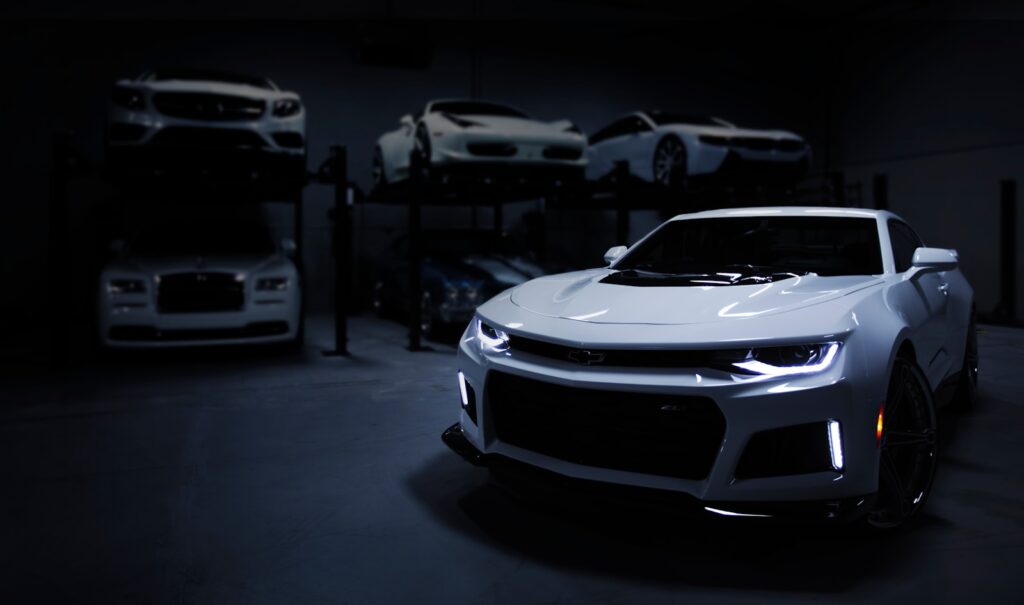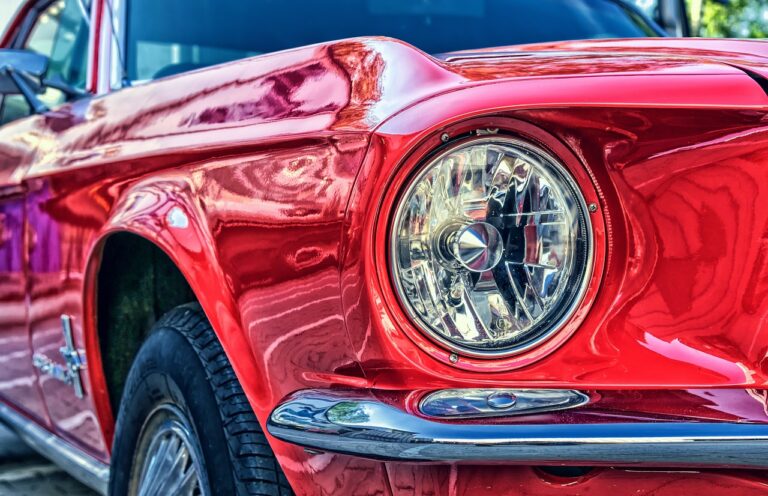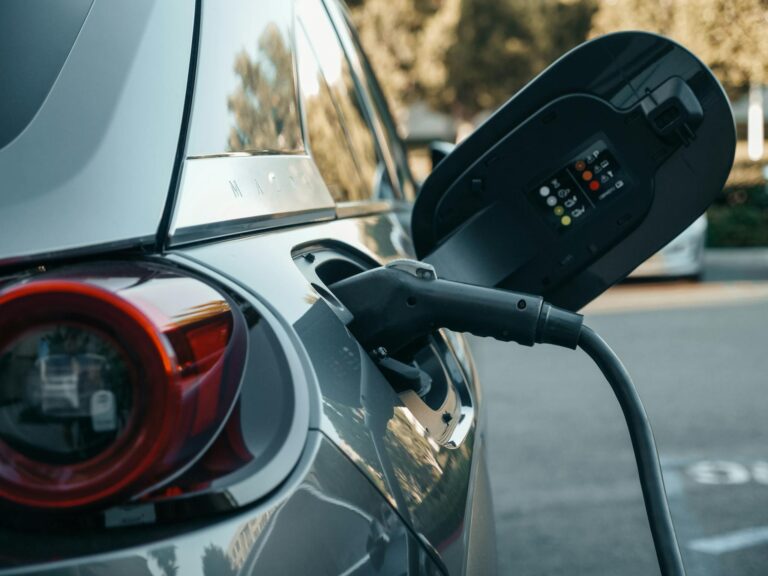The Future of American Muscle Cars in an Electric Era
The unmistakable roar of American muscle cars has been a cornerstone of automotive culture for over half a century. From drag strips to drive-ins, these high-horsepower icons have defined performance motoring for generations. But as the automotive industry accelerates toward an electric future, muscle cars face their biggest evolution yet. Far from spelling the end of the American performance car, the electric revolution is ushering in a new golden age of tire-smoking power – just with a different kind of muscle. With manufacturers like Dodge, Ford, and General Motors investing billions in electric performance platforms, the question isn’t whether muscle cars will survive the transition, but how they’re being reinvented to thrill a new generation of enthusiasts. From record-breaking acceleration figures to innovative sound engineering solutions, and market-shifting demographics, the transformation of these American icons offers a fascinating glimpse into the future of performance vehicles.

Heritage Meets Horsepower: How Electric Powertrains Are Redefining Muscle Car Performance
The rumble of a V8 engine has long been the heartbeat of American muscle cars, but a new era of tire-shredding performance is emerging from an unlikely source: electric motors. With instant torque delivery and power outputs that would make traditional muscle cars blush, electric powertrains are proving that the future of performance isn’t just sustainable – it’s faster than ever.
Take the upcoming electric Dodge Charger Daytona SRT, for example. While purists might miss the supercharged Hellcat’s distinctive whine, the new EV’s 800V electrical architecture delivers an estimated 850 horsepower – a significant leap from the current ICE Charger SRT Hellcat’s 797 hp. More importantly, the electric powertrain delivers maximum torque at zero rpm, resulting in sub-2.5-second 0-60 mph times.
The numbers tell a compelling story across the board. Ford’s Mustang Mach-E GT Performance Edition produces 480 horsepower and 634 lb-ft of torque, launching to 60 mph in just 3.5 seconds. Compare that to the V8-powered Mustang GT’s 486 horsepower and 4.1-second 0-60 mph time, and the performance advantages become clear.
But it’s not just straight-line performance where electric muscle cars are excelling. The lower center of gravity created by floor-mounted battery packs is revolutionizing handling capabilities. The Mach-E GT, for instance, pulls 1.02 g on the skidpad – numbers that would have been unthinkable for a traditional muscle car just a few years ago.
Here’s how the latest electric muscle cars stack up against their ICE counterparts:
- 2024 Electric Dodge Charger Daytona SRT
- Horsepower: 850 (estimated)
- 0-60 mph: 2.5 seconds
- Quarter-mile: 10.5 seconds (estimated)
- 2023 Dodge Charger SRT Hellcat
- Horsepower: 797
- 0-60 mph: 3.6 seconds
- Quarter-mile: 10.96 seconds
- 2024 Ford Mustang Mach-E GT Performance Edition
- Horsepower: 480
- 0-60 mph: 3.5 seconds
- Quarter-mile: 12.1 seconds
- 2024 Ford Mustang GT
- Horsepower: 486
- 0-60 mph: 4.1 seconds
- Quarter-mile: 12.4 seconds
The transition to electric power isn’t just about maintaining performance – it’s about exceeding it. While the characteristic rumble of a V8 might be missing, the neck-snapping acceleration and superior handling characteristics of electric powertrains are writing a new chapter in the muscle car story. As battery technology continues to evolve and power density improves, we can expect even more impressive performance figures in the coming years.
Preserving the Muscle Car Soul: Design and Sound Engineering in the EV Age
The soul of a muscle car has always been more than just raw performance numbers – it’s about the visceral experience, the distinctive styling, and that spine-tingling exhaust note. As American automakers transition to electric platforms, they’re finding innovative ways to maintain these essential character traits while embracing the future.
“The challenge isn’t just about making fast cars – it’s about creating an emotional connection,” explains Ralph Gilles, Chief Design Officer at Stellantis. “With the electric Charger Daytona SRT, we’ve maintained the iconic muscle car silhouette while incorporating modern aerodynamic elements that enhance both performance and efficiency.” The result is a design that features the traditional long hood and aggressive stance, but with subtle EV-specific touches like a more streamlined front fascia and aerodynamic wheel designs.
Perhaps the most controversial aspect of electric muscle cars is the sound – or traditional lack thereof. Dodge has tackled this challenge head-on with their innovative Fratzonic Chambered Exhaust system. This industry-first technology produces a 126-decibel sound that mimics the characteristic growl of a Hemi V8 through an amplifier and tuning chamber. Below are the key sound engineering approaches from major manufacturers:
- Dodge Fratzonic System
- 126-decibel output
- Mechanical sound generation
- Multiple sound profiles
- Speed-dependent variations
- Ford Mustang Mach-E
- Synthesized engine notes
- Customizable sound profiles
- Interior and exterior speakers
- Motion-linked audio response
- GM’s Future Sound Architecture
- Variable frequency output
- Heritage-inspired tones
- Driver-selectable modes
- Acoustic enhancement system
Interior design has also evolved to blend classic muscle car elements with modern EV requirements. Traditional analog gauges are being replaced by customizable digital displays that can show everything from power output to energy regeneration, while still maintaining the driver-focused cockpit layout that muscle car enthusiasts expect.
“We’re not trying to replicate the past – we’re reinterpreting it for the future,” says Stuart Norris, Interior Design Director at GM. “The key is maintaining the emotional connection while embracing new technologies that enhance the driving experience.” This approach is evident in details like:
- Machined aluminum switchgear
- Performance-oriented digital displays
- Heritage-inspired color schemes
- Textured materials that echo classic muscle car interiors
- Driver-centric control layouts
The preservation of muscle car DNA in the electric era isn’t just about nostalgia – it’s about maintaining a distinct American performance car identity. As these vehicles evolve, manufacturers are proving that the essence of what makes a muscle car special can not only survive but thrive in the electric age. Through thoughtful design evolution and innovative sound engineering, the muscle car experience is being carefully translated for a new generation of enthusiasts.
Market Analysis: The Business Case for Electric Muscle Cars
Quick Take:
- Traditional muscle car sales down 12% YOY
- EV performance vehicle segment growing at 28% annually
- 65% of current muscle car owners open to electric alternatives
- Average buyer age dropping from 54 to 41 in EV performance segment
The business landscape for muscle cars is undergoing a seismic shift. While traditional V8-powered models have seen declining sales over the past five years, the emerging market for electric performance vehicles presents a compelling opportunity for American automakers. In 2023, traditional muscle car sales totaled 150,000 units across all manufacturers, down from 170,000 in 2022 – but electric performance vehicle sales have more than doubled in the same period.
Demographics tell an interesting story. The average buyer of a traditional muscle car is 54 years old, but electric performance vehicles are attracting a significantly younger audience, with an average age of 41. This younger demographic typically has higher disposable income and shows more concern for environmental impact, making them ideal customers for premium electric performance vehicles.
Price positioning reveals another crucial aspect of the market transformation:
Traditional Muscle Cars (2024 Models):
- Dodge Challenger: $30,545 – $89,090
- Ford Mustang GT: $41,495 – $57,970
- Chevrolet Camaro: $30,900 – $69,195
Electric Performance Models (2024 Models):
- Dodge Charger Daytona EV: $50,000 – $100,000 (estimated)
- Ford Mustang Mach-E GT: $61,995 – $69,895
- GM’s Future EV Muscle Car: $55,000 – $95,000 (projected)
While electric variants command higher prices, market research indicates strong consumer acceptance. A recent J.D. Power study shows that 65% of current muscle car owners would consider an electric alternative for their next purchase, provided it delivers equivalent or better performance. The higher initial purchase price is offset by:
- Lower operating costs
- Reduced maintenance requirements
- Higher residual values
- Available tax incentives
- Premium positioning in the market
Looking ahead, industry analysts project the electric performance vehicle segment to grow at an annual rate of 28% through 2028. This growth is supported by:
- Infrastructure Development
- Expanding charging networks
- Faster charging capabilities
- Home charging solutions
- Technology Advancements
- Improved battery density
- Enhanced range capabilities
- Better performance metrics
- Market Factors
- Stricter emissions regulations
- Rising fuel costs
- Increasing environmental awareness
The financial implications for manufacturers are significant. While development costs for electric platforms are substantial, the higher margins on electric performance vehicles (averaging 15-20% compared to 8-12% for traditional muscle cars) make the business case compelling. Ford reports that the Mach-E GT’s profit margin is nearly double that of the traditional Mustang GT.
As we look to the future, the market data suggests that electric muscle cars aren’t just a trend – they’re becoming the new standard in American performance vehicles. With strong consumer interest, favorable demographics, and solid profit potential, the business case for electric muscle cars is increasingly difficult to ignore. Manufacturers who successfully navigate this transition while maintaining their performance heritage will be well-positioned for long-term success in this evolving market segment.
Verdict: A New Chapter in American Muscle Car History
The transition of American muscle cars into the electric era represents more than just a change in powertrains – it’s a renaissance of performance, design, and market opportunity. While traditionalists might mourn the declining era of V8 engines, the data speaks for itself: electric muscle cars are faster, more capable, and increasingly appealing to a broader, younger audience. The careful preservation of muscle car DNA through thoughtful design and innovative engineering solutions proves that the essence of these vehicles – raw power, distinctive styling, and the ability to stir emotions – remains intact.
As we look to the future, it’s clear that electric muscle cars aren’t just surviving; they’re thriving. With performance metrics that exceed their ICE predecessors, sound engineering that captures the soul of traditional muscle cars, and a strong business case backed by impressive market growth, these vehicles are blazing a trail for the next generation of American performance. The muscle car isn’t dying – it’s evolving, and the future looks brighter (and faster) than ever.
For those who love the thrill of instant torque and the rush of acceleration, the electric era of muscle cars promises to deliver everything we’ve loved about these vehicles, just with a different kind of roar. As Joseph Chen often reminds us during test drives at CarsInsiders.com, “The heart of a muscle car isn’t in its engine type – it’s in its ability to put a smile on your face every time you hit the accelerator.” By that measure, the future of American muscle cars is secure.






